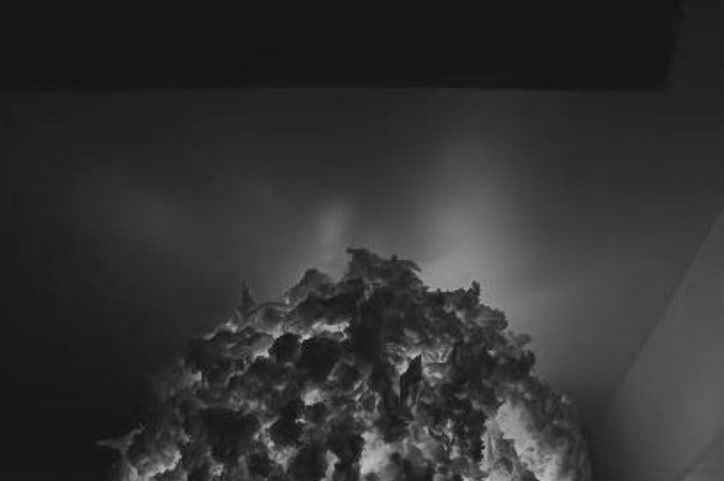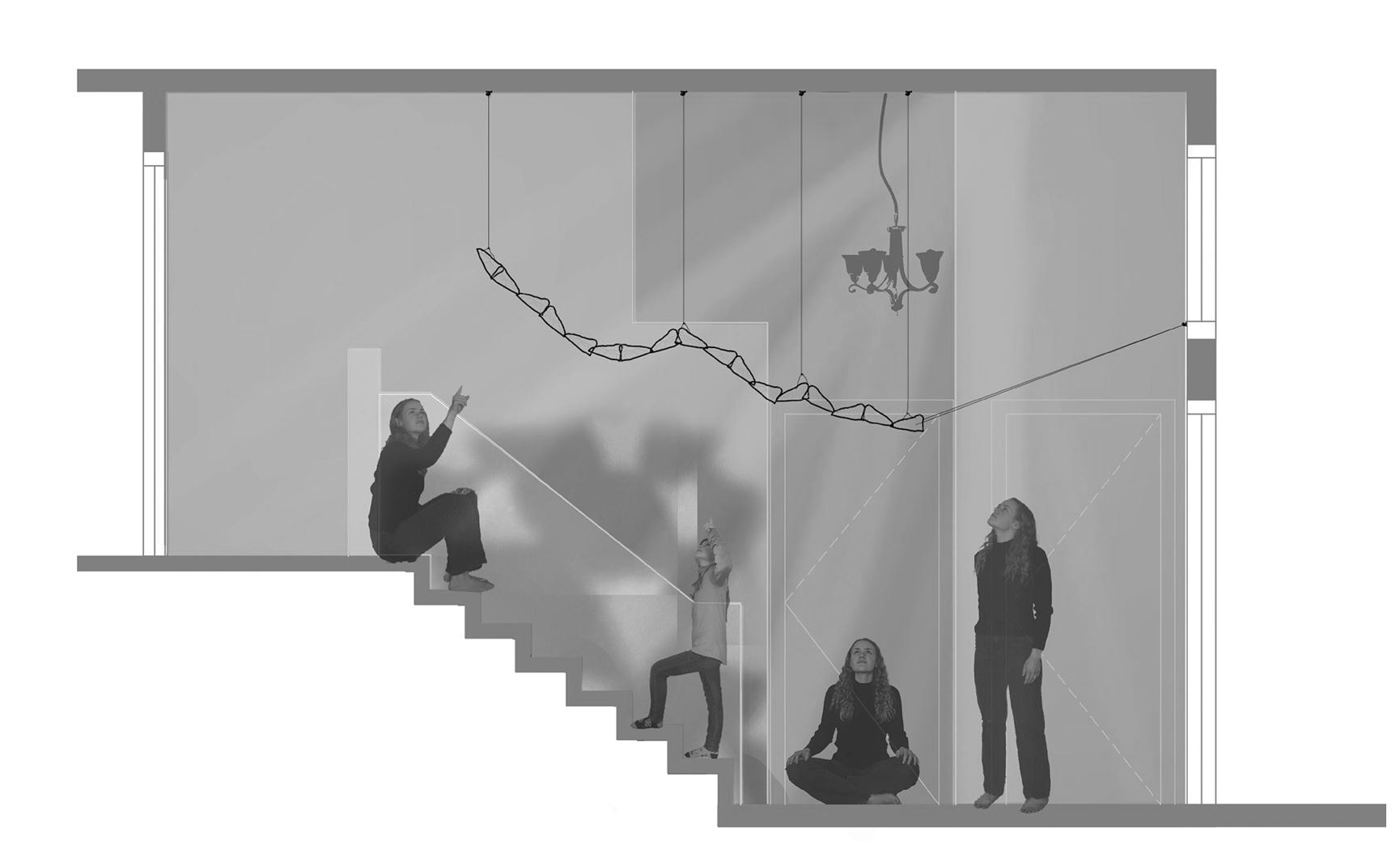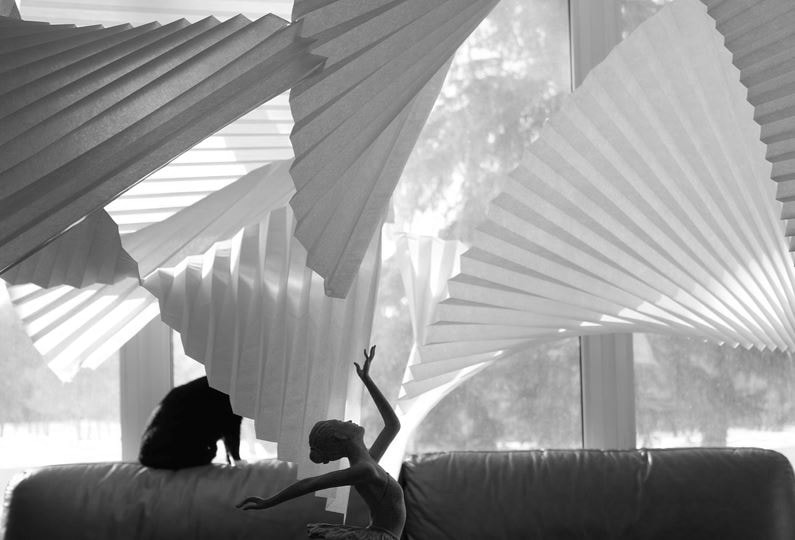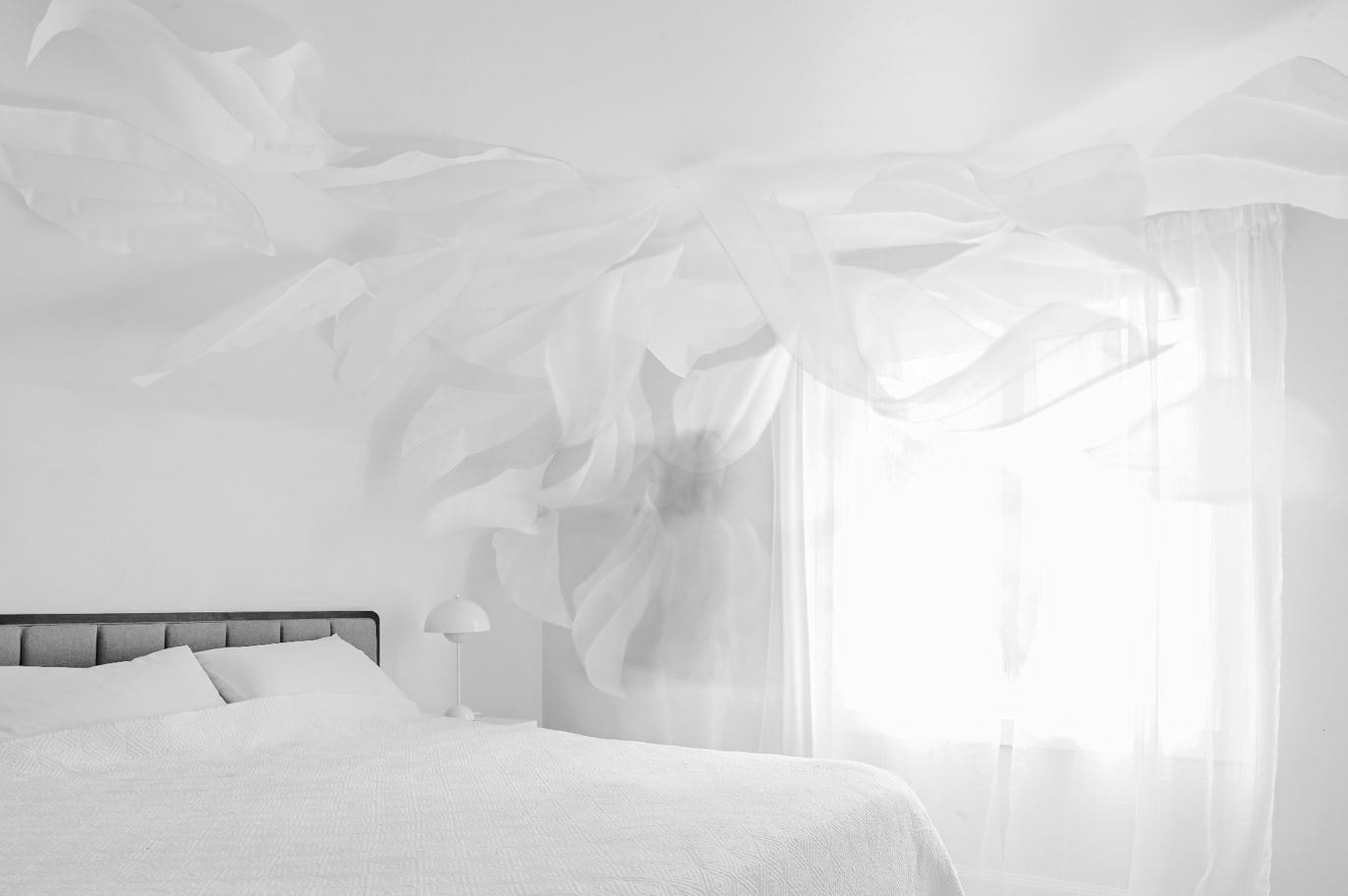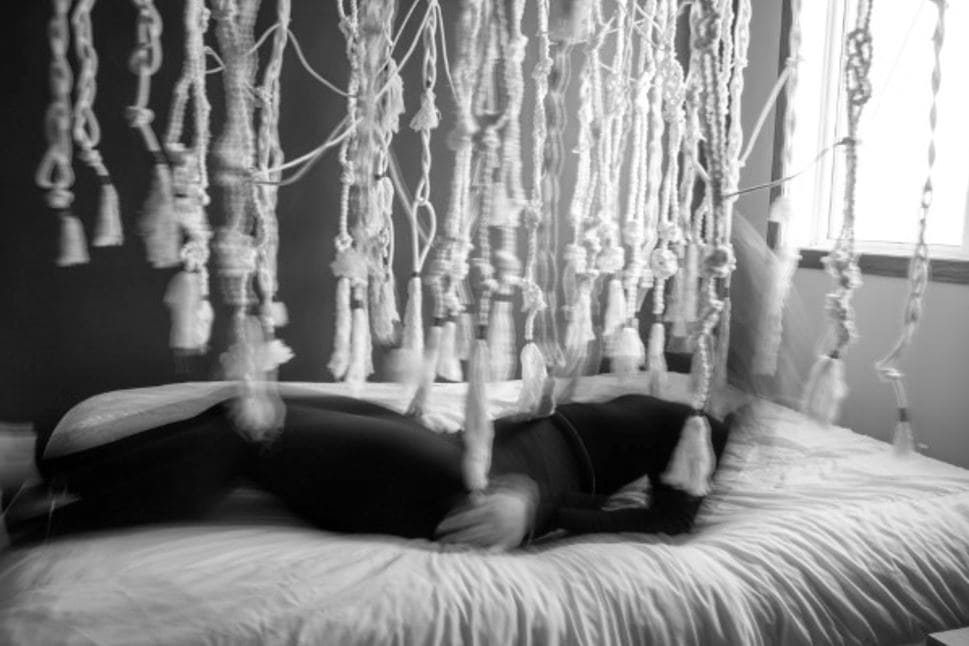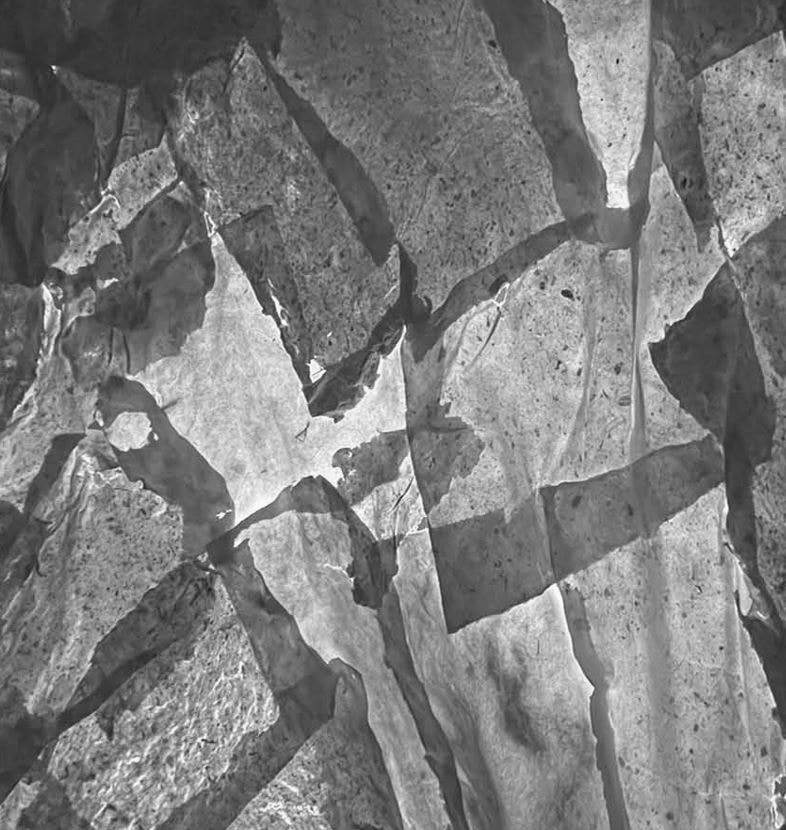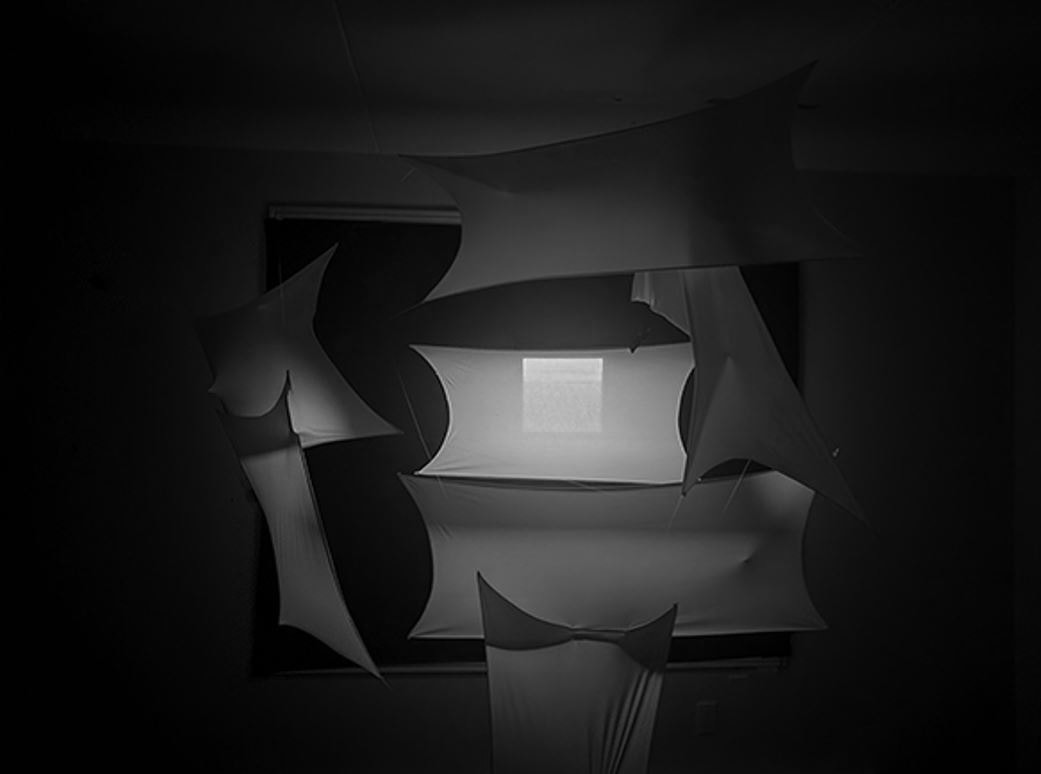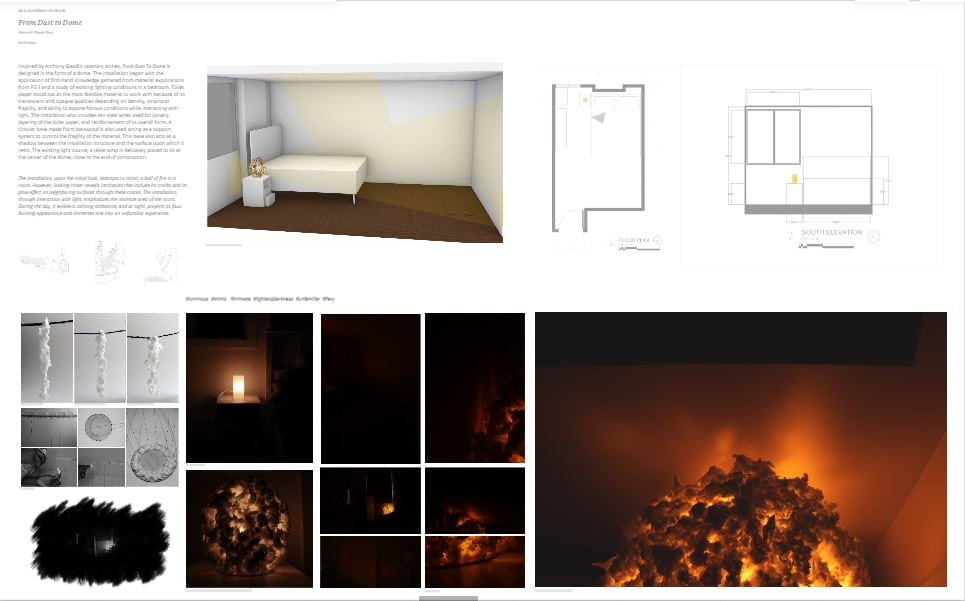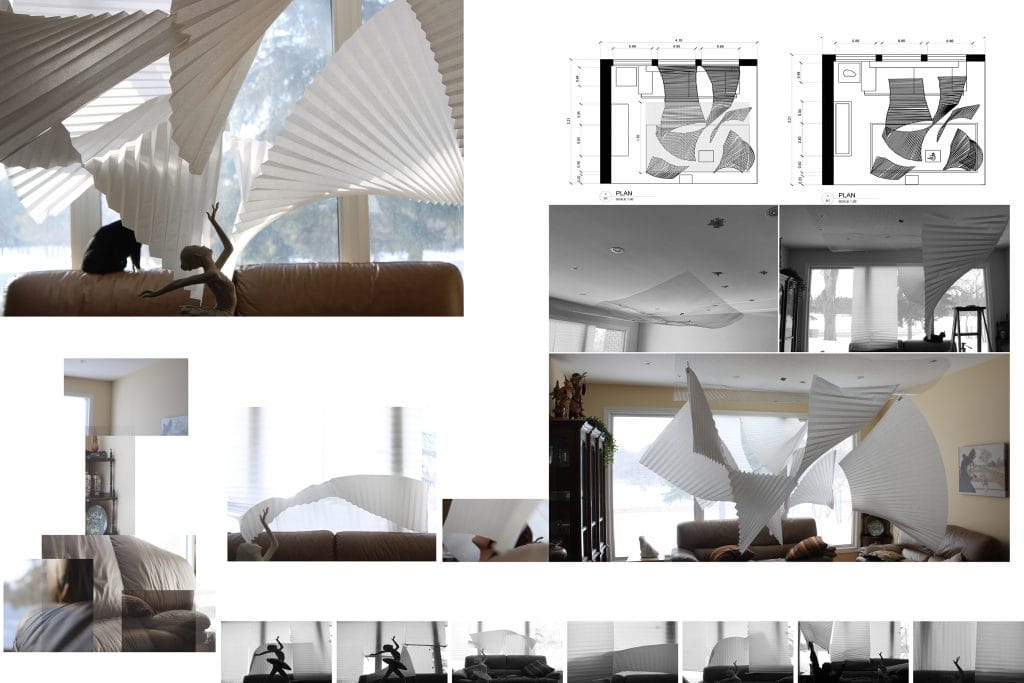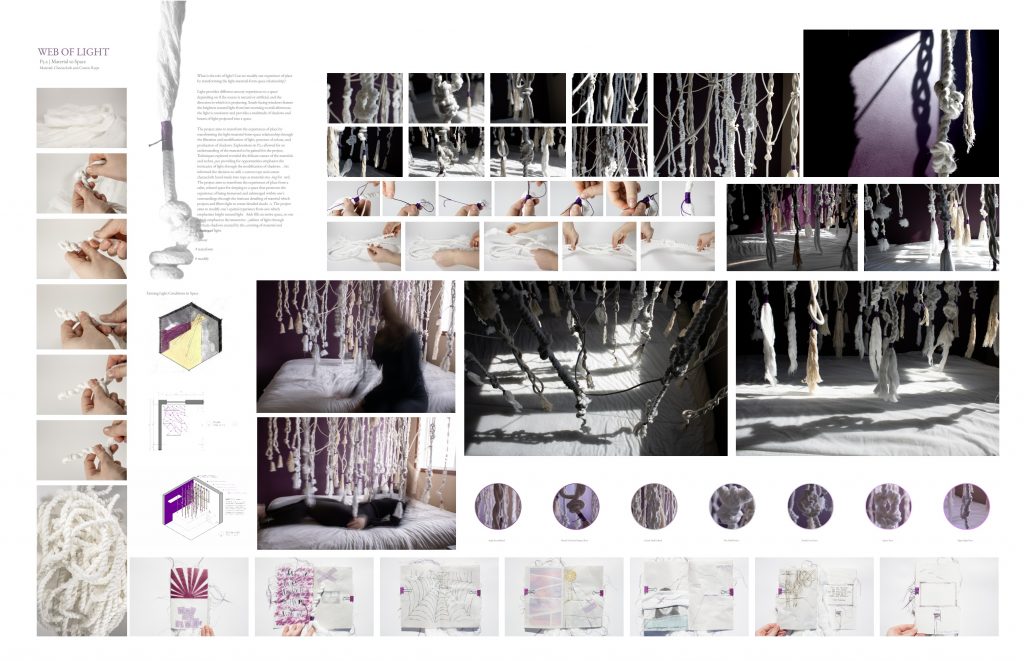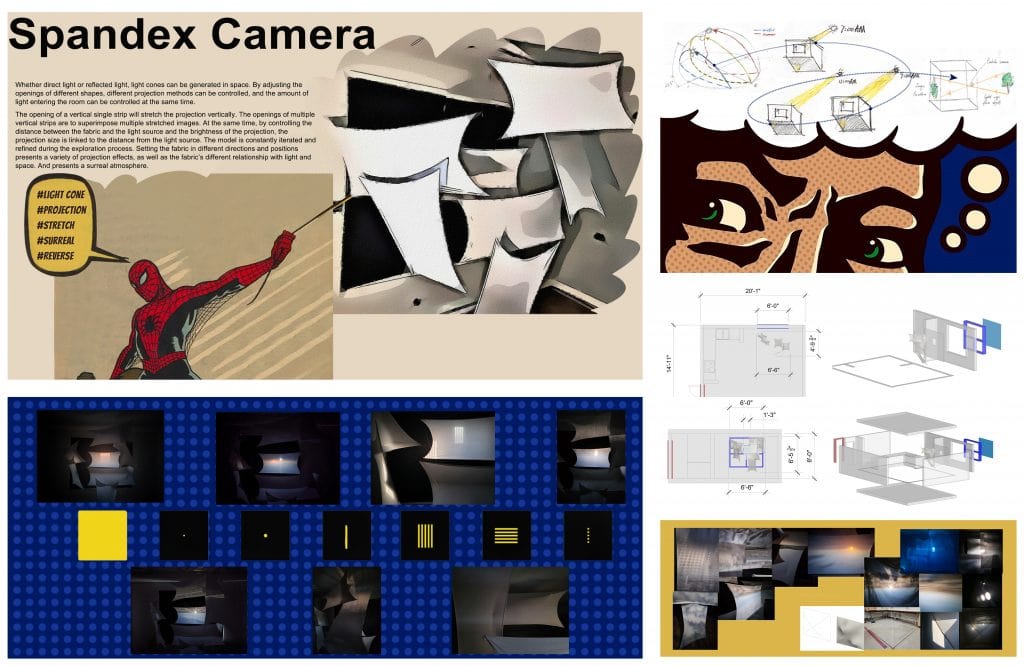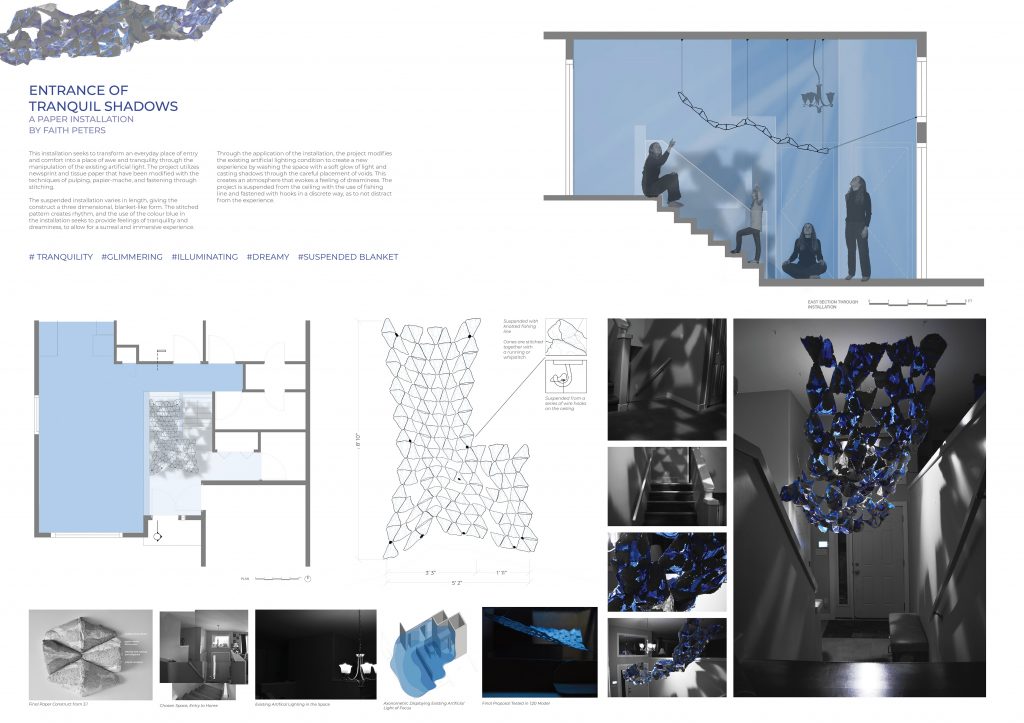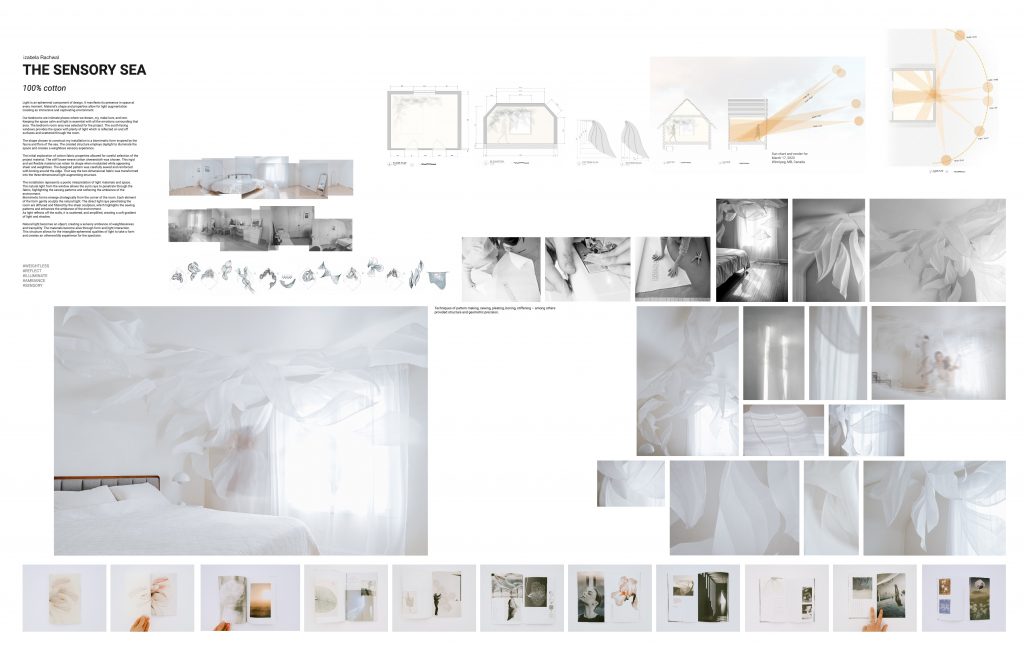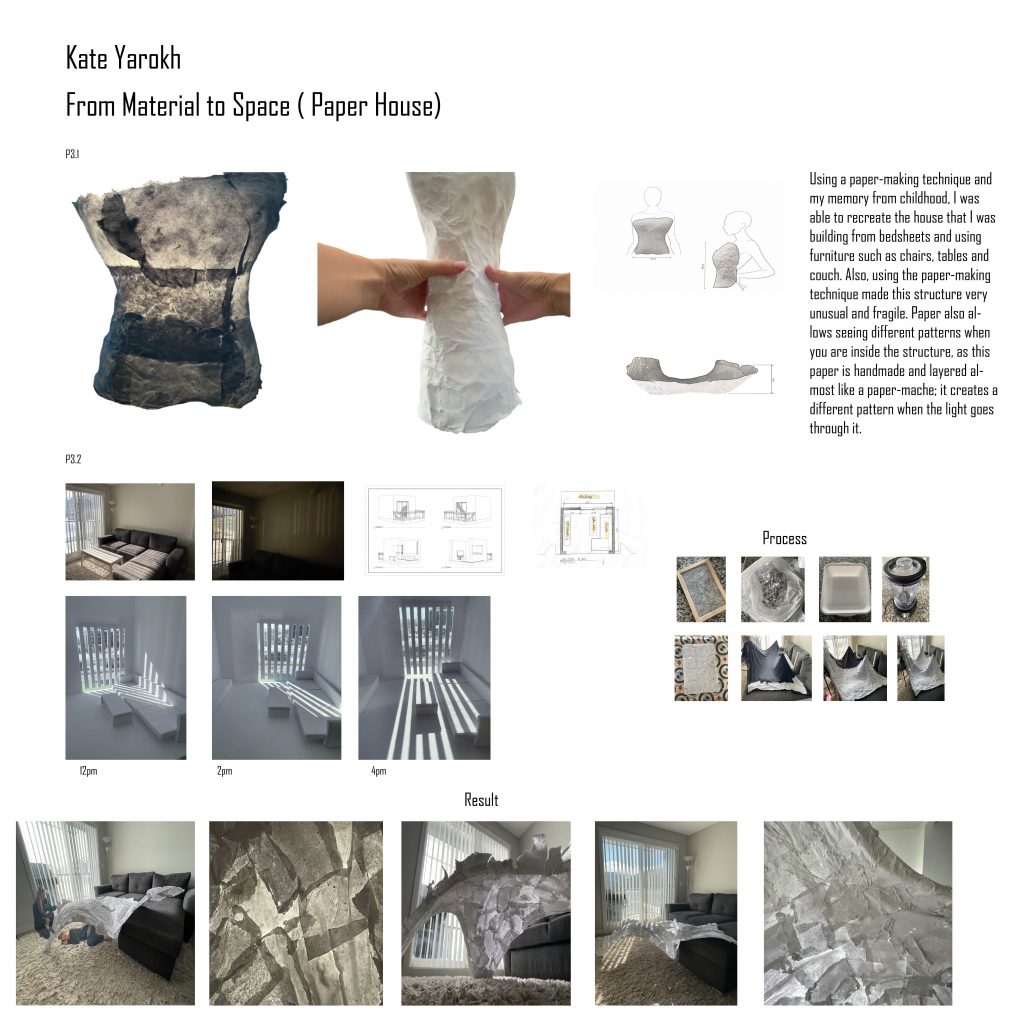P3.2 Material to Space (Space)
Instructor: Jae-Sung Chon, Kim Wiese, Leanne Muir, Ryan Coates, Tony Neustaedter and Kailey Kroeker
EVDS 2900
Year 2 Environmental Design
What are the contextual attributes and agencies that construct our spatial experience? How do they affect our sense of spatial presence? What is the role of light? Can we modify our experience of place by transforming the light-material-form-space relationship? Can we forge a new spatiality by understanding design as a tool to enable new experiences? Can we dislocate ourselves from a space and its context through spatial effects? Can we immerse into an experience that is unfamiliar, strange, surreal and so on?
P3.2 seeks to show/express how the material study from P3.1 can transform space/place, pursuing a purposeful integration of light and space. The research, explorations, and iterations from P3.1 perform as a catalyst for re-imagining the potentials of the spaces we inhabit, both as object and effect. To this end, the studies undertaken in P3.1 may be reworked, rescaled, and redeveloped as appropriate to the chosen space. A range of light-form-space proposals are encouraged, from the spectacle to the nuanced, dramatic to the banal and superfluous. The first-hand experience and knowledge of the material properties researched in P3.1 will lead to the conceptualization and creation of design applications that realize innovative spatial potentials as related to light.
Busola Ayoola
From Dust to Dome
My name is Busola Ayoola. I am an international student in ED2. I was born and raised in Nigeria. My favorite hobby is cooking because I enjoy mixing different ingredients and hoping something good comes out of it. My experience in ED2 was a hustle and tussle. It brought tears, a lot of work and most importantly new ways of thinking. ED2 exposed me to many resources such as Indigenous culture and techniques, principles of ecology, and how to apply them, to name but a few. Hence, P3 was my favorite project because it helped me embrace hands-on techniques throughout the design process. I am proud of myself for coming this far, happy and thankful for the lessons, and looking forward to embracing what the future holds. My ED2 taught me that as designers, opportunities for intervention exist around us, we just need to look.
Sydney Brown
My name is Sydney Brown. I am in my second year of Environmental Design, and I am applying to the architecture and landscape architecture streams for ED3 and ED4. I gain significant inspiration from nature and love spending time at my cabin in Lake of the Woods. In school, I love learning about ecology and design as well as learning how to draw. Drawing has become a new hobby of mine which helps me with my studies and helps me find balance in my life. The Environmental Design program is incredibly challenging which makes the rewards even more satisfying. This program allows you to discover new parts of yourself, gain confidence and explore new interests.
Kaylee Komatich
Web of Light
For as long as I can remember, I’ve had an interest in design. When I finally decided to pursue the Environmental Design program after several years off from school, I was fascinated with the prospect of a program that exposes and enriches education through the exposure to multiple streams, disciplines, and methods of design, while remaining under the umbrella of “Environmental Design”. As a young student, the prospect of focusing on designing for the environment and future climate is what drew me into the program.
Zhenggang Li
Spandex Camera
My name is Zhenggang, an international student from China. My interest in architecture was sparked by the visit to the 2012 Shanghai World Expo, and I hope to create architecture with unique experiences as well.
Whether direct light or reflected light, light cones can be generated in space. By adjusting the openings of different shapes, different projection methods can be controlled, and the amount of light entering the room can be controlled at the same time.
The opening of a vertical single strip will stretch the projection vertically. The openings of multiple vertical strips are to superimpose multiple stretched images. At the same time, by controlling the distance between the fabric and the light source and the brightness of the projection, the projection size is linked to the distance from the light source. The model is constantly iterated and refined during the exploration process. Setting the fabric in different directions and positions presents a variety of projection effects, as well as the fabric’s different relationship with light and space. And presents a surreal atmosphere.
Faith Peters
Entrance of Tranquil Shadows
My love and curiosity for design began when I was young. I have always had a fascination with organizing and decorating spaces. ED2 has made these interests so much more robust, and I now not only think about the aesthetic of a space but also its function, material, and meaning. This year has given me new perspectives and knowledge that I am excited to use and expand upon as I continue in my education, and in my personal life. The possibilities of where my future in design takes me make me excited and eager to keep going.
This installation seeks to transform an everyday place of entry and comfort into a place of awe and tranquillity through the manipulation of the existing artificial light. The project utilizes newsprint and tissue paper that has been modified with the techniques of pulping, papier mache, and fastening through stitching.
The suspended installation varies in length, giving the construct a three-dimensional, blanket-like form. The stitched pattern creates rhythm, and the use of the colour blue in
the installation seeks to provide feelings of tranquillity and dreaminess, to allow for a surreal and immersive experience.
Izabela Rachwal
Sensory Sea
My name is Izabela Rachwal. I was born and raised in Poland, but now I call Canada my home. Growing up in Europe allowed me to travel easily and experience variety of design. I have always been fascinated with people and cultures and had artistic interests, which led me to become a travel and portrait photographer. I am fortunate to travel all over the world capturing beautiful locations and taking portraits of people I meet along the way. This journey lead me here. The passion for travel and the desire to explore the world and immerse myself in other cultures opened my world to wider range of design and architecture. I realized that design is not only something that contributes to visual and practical advantages (or the opposite), but it can be a tool to solve complex problems. From inequality, poverty, and racism, to phisical and mental wellbeing etc. Design inspired me to go back to University for the second time and pursue the degree in environmental design (and hopefuly architecture).
Light is an ephemeral component of design. It manifests its presence in space at every moment. Material’s shape and properties allow for light augmentation creating an immersive and captivating environment.
Our bedrooms are intimate places where we dream, cry, make love, and rest. Keeping the space calm and light is essential with all the emotions surrounding that area. The bedroom area was selected for the project. The south-facing windows provides the space with plenty of light which is reflected on and off surfaces and scattered through the room.
The shape chosen to construct my installation is a biomimetic form inspired by the fauna and flora of the sea. The created structure employs daylight to illuminate the space and creates a weightless sensory experience.
The initial exploration of cotton fabric properties allowed for careful selection of the project material. The stiff loose weave cotton cheesecloth was chosen. This rigid yet flexible material can retain its shape when modulated while appearing sheer and weightless. The designed pattern was carefully sewed and reinforced with boing around the edge. That way the two-dimensional fabric was transformed into the three-dimensional light augmenting structure.
Kate Yarokh
Paper House
Using a paper-making technique and my memory from childhood, I was able to recreate the house that I was building from bedsheets and using furniture such as chairs, tables and couch. Also, using the paper-making technique made this structure very unusual and fragile. Paper also allows seeing different patterns when you are inside the structure, as this paper is handmade and layered almost like a paper-mache; it creates a different pattern when the light goes through it.

